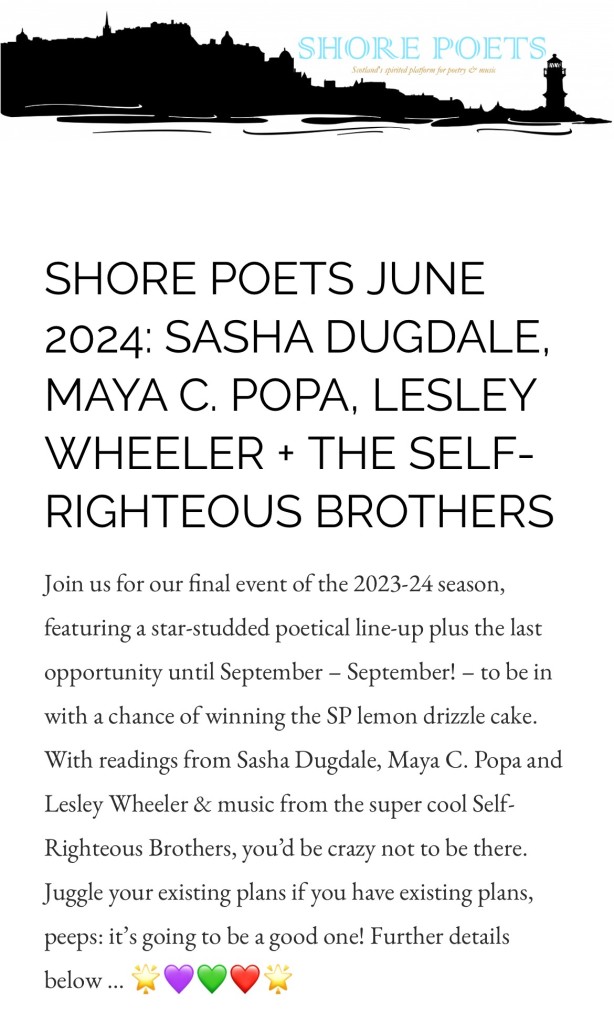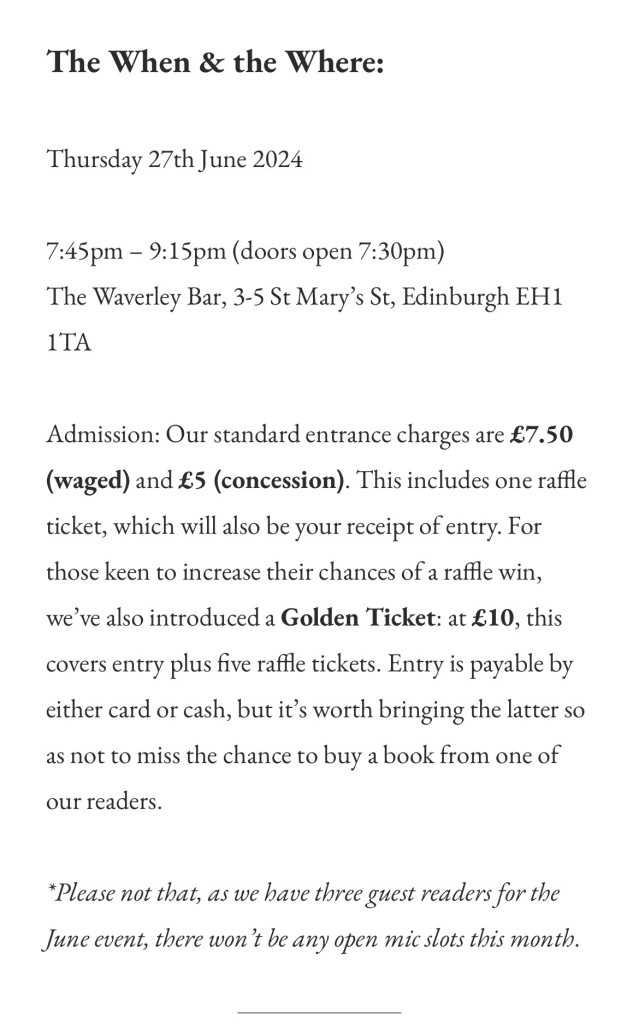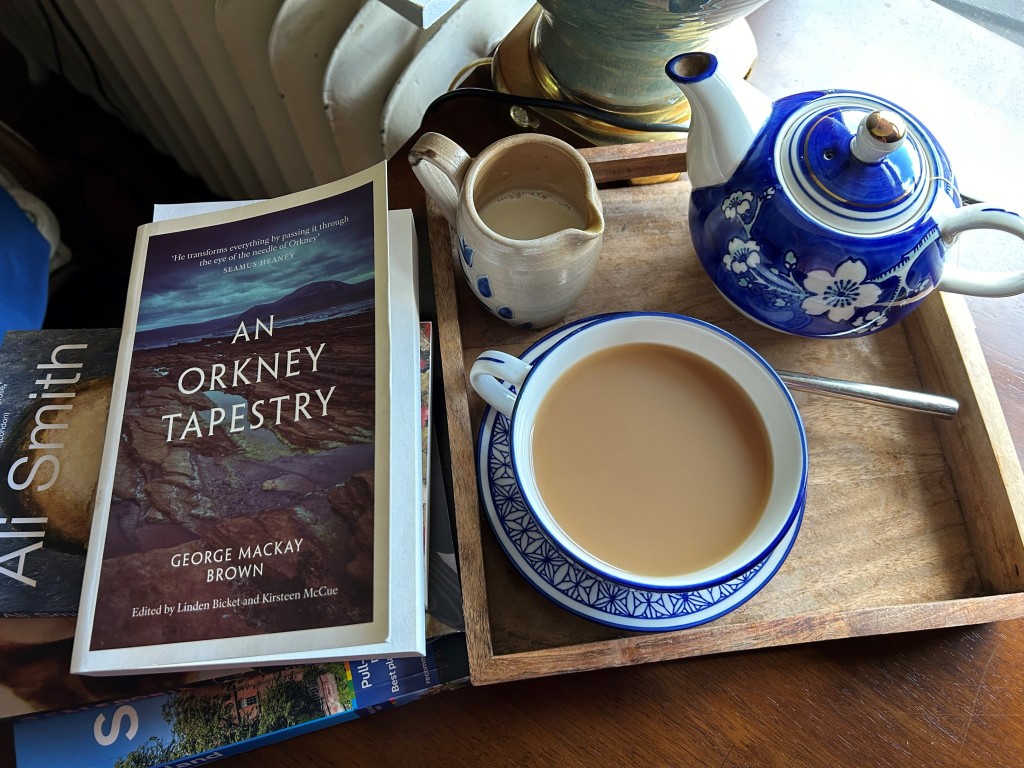Sick for much of the last few weeks, I became a literary twister, pulling in a lot of reading and flinging out a few things, too. I’m not in poetry submission mode, except for a couple of residency applications. Instead, I’m occupying the quiet eye of a poetry storm by preparing a book for publication, which for me dovetails with the early summer-energy of cleaning up and getting organized after a stressful year.
The book is my sixth poetry collection, Mycocosmic, now scheduled for release on the auspicious-sounding March 4th, 2025 (though I’m having flashbacks to the inauspicious timing of my last poetry book, The State She’s In, launched on March 17, 2020). That means production this summer and ARCs in September. Tupelo Press‘ revised author questionnaire had some new-to-me questions, for example asking for comparable poetry titles from the last five years, so it took a LONG time. Filling out that kind of document also requires lots of forethought: where am I planning to travel, what events do I hope to do, what communities of readers do I seek?
While I experimented with hiring a publicist for Poetry’s Possible Worlds, and I’m glad I did, Tupelo’s distributor, Chicago, already does a lot of pitching to periodicals and bookstores, as well as submitting books to post-publication prizes. Tupelo also has a publicist in-house, Kristina Marie Darling, who covers other bases, and for Tupelo authors, she’ll consult on extra stuff for a small fee. I’ve already worked up and laid out a rough plan with her that feels pretty good. I’m not really aiming for the stratosphere anymore; national media seems locked up by an insular network of reviewers and publicists. I’m just going to give it all my best shot, hope for small wins, and be ready in the unlikely event of a lightning strike.
Part of that is to make sure the poetry itself is as strong as I can make it, so I’ve been combing through the ms again and again. I’ve also been researching and querying artists whose work might suit the cover. Mycocosmic is about a search for transformation while living in a middle-aged woman’s body and caring for, then grieving, my mother. It’s full of spell-poems and modes of divination, but its central metaphor is mycelium, the mostly below-ground fungal networks that break down death and nourish new plant and animal life. A continuous “underpoem” runs across the footer of each page. (Part of the metaphor: fairy rings and amanitas aside, the fruit of mycelium isn’t always showy, but without its underground life, death would overwhelm the world. Mycelium is, increasingly, my role model for doing good work in this world.)
I queried the amazing “Mushroom & Friends” photographer Phyllis Ma, whose work appears in places like the New Yorker and National Geographic, and wasn’t shocked when she said no, but have since found other art I love just as much. This week I submitted the whole package of revisions and plans to Tupelo. Fingers crossed.
Otherwise, I’ve been devouring stacked piles of books, especially poetry, with a high quotient of Caledonian work in the mix, because I’m off to SCOTLAND tonight! Two of the most striking books, though widely different, are both hybrid in form. On the US side, Gregory Pardlo’s new collection Spectral Evidence: the subtitle may be “poems” but many pieces are essayistic, idea-driven and bibliographied, and one of the most powerful is a short play, complete with dramatis personae and stage directions, about a vengeful white neighbor calling Child Protective Services on someone named “Greg” and his family. The book is essentially critical of supernaturalizing. “Black men and white women are similarly pressed into service as both muse and monster,” Pardlo writes in a prose preface to Spectral Evidence; the ghost “haunting the mind of Western patriarchy… omnipresent but rarely named, is Black women.”
An Orkney Tapestry, a 1969 book by Scottish poet George Mackay Brown, celebrates hauntedness. Trows (something like trolls or elves, I’ll clarify that for you if I meet one) enchant fiddlers. Saints intercede in ordinary Orkney lives. In short, he’s celebrating mixed forces of weirdness, and in fact critiques early on the popular myth that these far northern Scottish islands are “pure Viking,” which to him has a whiff of eugenics. I love his strange blending of original poetry, translated poetry, prose history, and playlets. Yet women–and Black sailors, in a fleeting historical episode–are definitely monsters and muses to Brown, and it sometimes drove me bananas. No one labors on the holy days, yet special cakes appear on breakfast table: magic, it turns out, depends on women’s drudge-work.
I speak, of course, as the trip-planner who spent days researching and plotting a complex route, and making all the reservations for this family of four. At least my husband will perform the magic of driving a manual on the wrong side of narrow Scottish roads. And we’ll spend the summer solstice on Skye! I hope to be back in July with good pictures and news of the reading I’m giving in the Shore Poets series in Edinburgh’s Waverly Bar. Meanwhile, I hope you’ll check out the new issue of Shenandoah that launched yesterday, full of fabulous poems I’m so glad to help deliver into readers’ hands.


